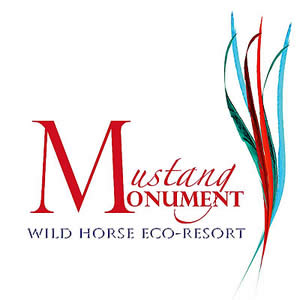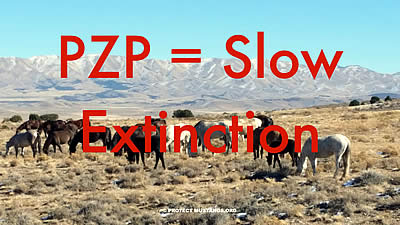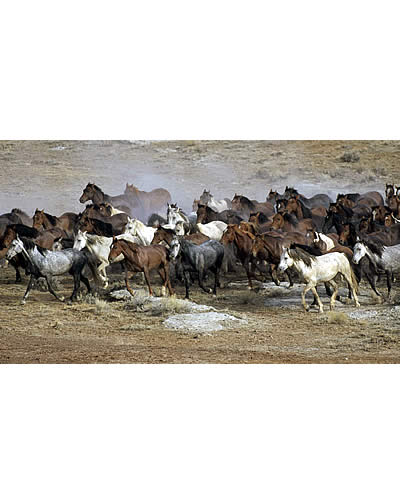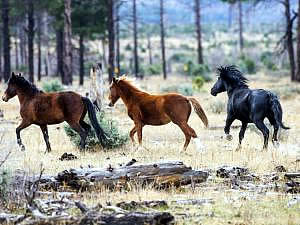Wells, NV – February 10th, 2016 – Mustang Monument was started on a dream and personal goal of Madeleine Pickens to save the American Mustangs that once were numerous across the West. To this day Madeleine has saved hundreds of horses and spent a wealth of personal time and money to fight for this worthy cause. Mustang Monument Eco-resort is a way for Madeleine to share her passion for these animals with the public and spread the word of their plight.
As they say, the tall trees do catch the wind – and Madeleine is certainly a tall tree. In her conservation efforts with the mustangs she has drawn not only immense support for her cause, but also strong conflict. Her pleas, legal battles and rallies for the animals are ongoing with politicians in Washington, and more specifically with the Bureau of Land Management (BLM) and private cattle ranchers in the Nevada area. The publicized issues with the BLM of late in Oregon as well as Nevada have increased scrutiny on Madeleine and Mustang Monument. The persecution of Madeleine and her ongoing battles for the benefit of these animals has this year bled into a thorough review of the operations at Mustang Monument with additional permitting requirements. In essence, we are at a stalemate.
One of the key aspects of Mustang Monument is the ability to appreciate the vast open spaces, sparsely inhabited by the magnificent mustangs for which we named our eco-resort. Unfortunately, to further observe these wonderful creatures, it is necessary to move from one privately owned portion of our ranch to the other, over roads that transverse public lands. To do this, we must obtain permission from the BLM, permission they regularly provide to others for far more mundane purposes, such as hunting and merely off-roading. However, in our case (as in many other aspects of our efforts to protect our heritage), the BLM has seen fit to delay and obstruct the issuance of the necessary permit – claiming among other things that they have lost or misplaced important public records necessary to resolve some of these issues. As we have no indication that the BLM will “find” these documents, or otherwise resolve the issues to permit access, we regretfully cannot assure our guests the experience we wish them to have.
To all the supporters of Saving America’s Mustangs and Mustang Monument, we appreciate your support in the past and as we push forward through these trying times. Please know that even though the resort will not be taking guests, we will be looking after the herd of over 800 rescued mustangs as always. That said, we will prevail and these majestic symbols of the American West shall continue to be free.
Any queries on the above can be directed to Kristy deLange on kdelange@savingamericasmustangs.org or by phone on 858-759-5500 X242.
BACKGROUND:
In 2005, a soldier in fatigues and a force called Katrina changed Madeleine Pickens forever.
Madeleine was not prepared to sit idly by and watch the devastation following Katrina unfold without getting involved somehow. In her headstrong way Madeleine motivated then husband T. Boone Pickens to go to Louisiana to witness the devastation first hand and to help load the first of the chartered planes with animals. The soldier in fatigues met them off the plane and asked about their purpose. Madeleine’s reply was simple. She was there to help the animals. It was then when the soldier broke down. He told the story of his rescue mission earlier in the day in New Orleans where a puppy had managed to take a spot in the rescue helicopter and sat happily wagging his tail – proud to have made it aboard. The soldier noticed the joy of the puppy and shouted out for others to take note amidst such sadness. The pilot however did not share the soldier’s opinion, and instead was clear in his order to make room for people and throw the puppy off. The man in fatigues had to do the unthinkable and place the puppy back in the contaminated floodwater…
Madeleine’s efforts to rescue the animals of Katrina included more than six aircraft filled with food, leashes, medicine, and transport crates. She organized a team of volunteers which flew over 800 dogs and cats out of Baton Rouge to California before reuniting many with their families again. The connections she made on the ground in Louisiana and in the following months immersed her into a world of people fighting for the rights of animals and protecting those creatures who cannot speak for themselves. It was late in 2005 when she heard of the horror that was befalling the American Mustang.
Again, Madeleine jumped to action and quickly made headway. In 2006 she met with Senator Harry Reid and Senator Dianne Feinstein and described her plans to start an eco-resort which works solely to benefit the Mustangs. Sen. Reid & Sen. Feinstein were supportive and asked Madeleine to go ahead and purchase the land, and then they would endorse the project. Madeleine purchased 900 square miles of land in Nevada. Henri Bisson, then head of the Bureau of Land Management (BLM), was also in support and “sanctioned the project” at the Wild Horse and Burro meeting in Reno on 17 November 2008. Sadly, Henri Bisson resigned shortly thereafter and with his resignation came ongoing battles and stalling by our government and the BLM.
Madeleine’s mission to save the Wild Mustangs and preserve the history of America has spanned over 10 years, and to this day the program is viewed with contempt by the government that is bound to protect these animals, and met with unnecessary challenges because of ranchers and government offices that are benefitting from the destruction of these magnificent and peaceful creatures. One hundred years ago there were two million mustangs roaming free, and now there are approximately 30,000.
The timeline below illustrates milestones in the road which was travelled. It was not an easy path, nor the one with least resistance, and it has been expensive with costs to Madeleine exceeding $25 million dollars. However, she will continue to fight for these kind and gentle animals not to be caged or separated from their family, not to be placed in trucks and sent over international borders to be slaughtered, and not to have them chased, terrified, and suffering before slaughter all to end up on a plate.
- 2005- Madeleine learns of Mustang Round Ups
- Early 2006- Madeleine approaches Senators with her ideas
- July 2006- Madeleine and then husband T. Boone Pickens testify before Congress to ban horse slaughter calling it “Un-American”. Press release can be found here: http://www.prnewswire.com/news-releases/t-boone-pickens-takes-on-horse-slaughter-legendary-oilman-calls-horse-slaughter-un-american-56982582.html
- September 2006- H.R. 503 passes the House 263 to 146. The vote statistics can be found at https://www.govtrack.us/congress/votes/109-2006/h433
- November 2008- Henri Bisson supported the Mustang Monument project at the National Wild Horse and Burro Advisory Meeting in Reno, NV
- Throughout 2009 & 2010- various meetings and letters to Senators, Congressmen, Bureau of Land Management officials with data and research to support Mustang Monument as a way to save the horses as well as save the taxpayers money to move these animals from short term & long term holding facilities
- May 2010- Madeleine hosts an event at The Smithsonian in Washington DC to raise awareness for Saving America’s Mustangs. http://www.prnewswire.com/news-releases/madeleine-and-t-boone-pickens-celebrate-americas-heritage-at-the-smithsonian-national-museum-of-the-american-indian-94205584.html
- January 2011- Mustang Monument & Saving America’s Mustangs had a float in the Rose Parade with Mustangs and also supported by Native Americans, Wounded Warriors and their service dogs alongside to bring national attention to the cause
- 2012 onward- various visits with the BLM and government agencies to move forward with the plan including data and research from professionals. Three different law firms are on retainer to work through the various permitting and hoops that must be overcome
- 2013 onward- Employed A PR Company and Sales Team to showcase Mustang Monument and the mustang conservation effort through tourism.
- 2013, 2014, 2015- Worldwide travel to showcase the property and the story behind it
- December 2014- BLM and local officials demand Madeleine have a recreation permit to take guests from one property to her adjoining property which extends over a small portion of public land. To this day, the permit still has not been issued.
- 2014 & 2015- Funded visits from various journalists & photographers to assist in getting publicity for the Mustangs and the fight to save them.
- October 2015- BLM answers our queries for our permits by saying “the paperwork was misplaced”. Lawyers refiled the paperwork again and we were told that other issues prevented them from looking at the papers regardless.
- January 2016- The BLM added pressure to the operation and placed pressure on local government to get Madeleine to carry out work on water supply pipes in the midst of winter at a huge cost, which was complete. They still then held up permits.
Saving America’s Mustangs, 2683 Via De La Valle, G 313, Del Mar, CA 92014










